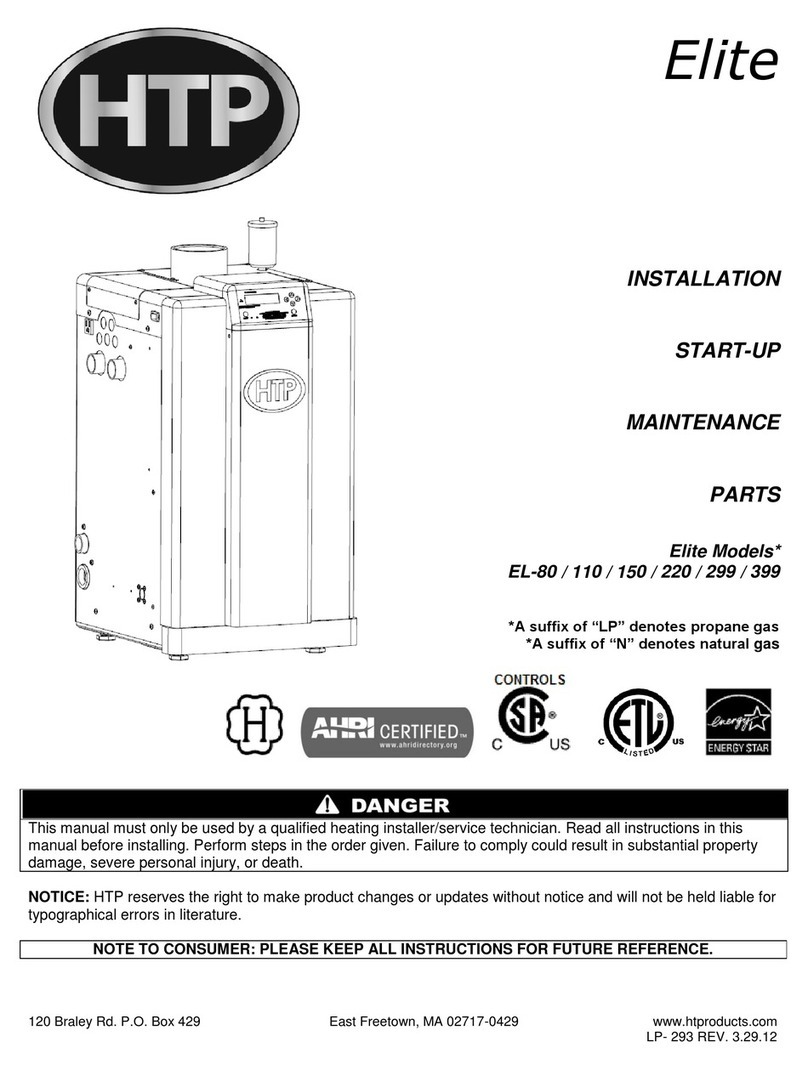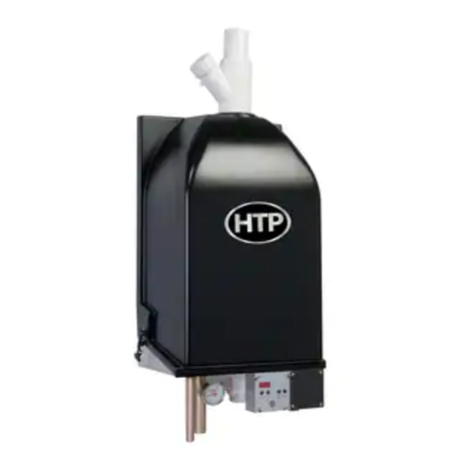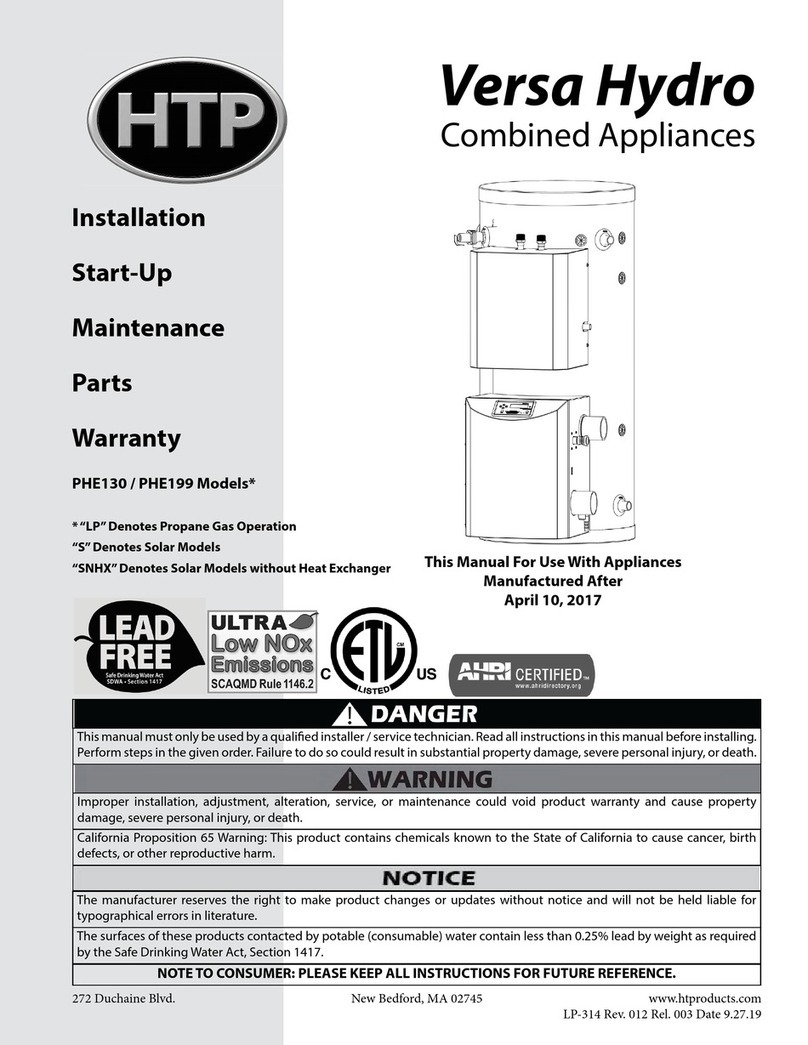
LP-389 Rev. 6.3.15
5
Part 4 - Maintenance Procedures
Failure to inspect the venting system and have it repaired by
aqualiedservicetechniciancanresultinventsystemfailure,
causing severe personal injury or death.
• Check the condensate drain system.
• If applicable, check the condensate neutralizer and
ensure it is full of condensate neutralizing marble chips.
Every 6 Months
Check appliance piping and gas supply piping for corrosion or
signs of potential leakage.
The appliance must be inspected and serviced annually,
preferablyat thestartof theheatingseason,by aqualied
service technician. In addition, the maintenance and care of
the appliance as outlined in this manual must be performed by
theuser/ownertoassuremaximumeciencyandreliability.
Follow the maintenance procedures given throughout this
manual. Failure to perform the service and maintenance
or follow the directions in this manual could damage the
appliance or system components, resulting in substantial
property damage, severe personal injury, or death.
Check the Surrounding Area
A. Daily Maintenance
To prevent the potential of substantial property damage,
severe personal injury, or death, eliminate the materials
listed in Table 1 from the area surrounding the appliance and
the vicinity of the combustion air intake. If contaminates are
found:
• Remove products immediately from the area.
• If contaminates have been there for an extended
period,callaqualiedservicetechniciantoinspectthe
appliance for possible damage from acid corrosion.
Ifproductscannotberemoved,immediatelycallaqualied
service technician to re-pipe the combustion air intake piping
away from the contaminated areas.
Combustible/Flammable Materials
Do not store combustible materials, gasoline, or other
ammable vapors or liquids near the appliance. If found,
remove these materials immediately.
Air Contaminates
If allowed to contaminate combustion air, products
containingchlorineoruorinewillproduceacidiccondensate
thatwillcausesignicantdamagetotheappliance.Readthe
list of potential contaminates and areas likely to have these
contaminates in Table 1, Part 2. If any of these contaminates
are in the room where the appliance is located, or combustion
air is taken from one of the areas listed, the contaminates
must be removed immediately or the intake pipe must be
relocated to another area.
Check Exhaust Vent and Intake Pipe Terminations
Verify that the appliance exhaust vent and intake pipe
terminations are clean and free of obstructions. Remove any
debris from the exhaust vent and intake pipe openings. If
removing the debris does not allow the appliance to operate
correctly,contactyourqualiedservicetechniciantoinspect
the appliance and the vent system.
Check Temperature Display and Pressure Gauge
• Ensure the pressure reading on the gauge does not
exceed 25 psig on boiler models, 145 psig onVWH models.
Higher pressure readings may indicate a problem with
the expansion tank.
• Ensure the temperature on the LED display panel does not
exceed 180oF. higher temperature readings may indicate
a problem with the thermostat operating controls.
• Contactaqualiedservicetechnicianifproblempersists.
Check Exhaust Vent and Intake Piping
Visually inspect the exhaust vent piping for any signs of
blockage, leakage, or deterioration of the piping. Inspect the
exhaust vent bracing. Ensure bracing is undamaged and in good
condition. Notify a qualied service technician immediately if
any problems are found.
B. Monthly Maintenance
Visually inspect the intake piping for any signs of blockage.
Inspect the entire length of the intake pipe to ensure piping is
intact and all joints are properly sealed. Inspect the intake pipe
bracing. Ensure bracing is undamaged and in good condition.
Notifyaqualiedservicetechnicianifanyproblemsarefound.
Check Pressure ReliefValve
• Visually inspect the primary pressure relief valve and
discharge pipe for signs of weeping or leakage.
• If the pressure relief valve often weeps, the expansion
tank may not be operating properly. Immediately contact
aqualiedservicetechniciantoinspecttheapplianceand
system.
Check Exhaust Vent Condensate Drain System
• While the appliance is running, check the discharge
endof thecondensatedrain tubing.Ensurenouegas
is leaking from the condensate drain tubing by holding
yourngersneartheopening.
• If you notice ue gas leaking from the opening, this
indicates a dry condensate trap. If problem persists,
contact a qualied service technician to inspect the
applianceandcondensatelineandrellthecondensate
trap.
• If applicable, check the condensate neutralizer and
ensure it is full of condensate neutralizing marble chips.
C. 6 Month Maintenance
Check Primary and Gas Piping
• Remove the appliance cover and perform a gas leak
inspection following Operating Instructions, page 2, this
manual. If gas odor or leak is detected, follow procedures
onpage2.Callaqualiedservicetechnician.
• Visually inspect for leaks around the internal appliance
water connections and around the heat exchanger.
Visually inspect the external system piping, circulators,
andsystemcomponentsandttings.Immediatellycalla
qualiedservicetechniciantorepairanyleaks.



























